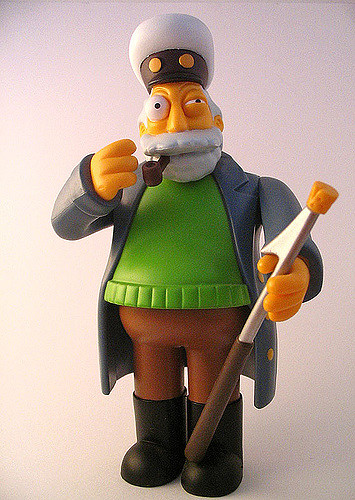Sometimes things need to get worse before they can get better.
 All the scary words are grounded in change. Innovation, by definition, is about change. When something is innovative it’s novel, useful and successful. Novel is another word for different and different means change. That’s why innovation is scary. And that’s why radical innovation is scarier.
All the scary words are grounded in change. Innovation, by definition, is about change. When something is innovative it’s novel, useful and successful. Novel is another word for different and different means change. That’s why innovation is scary. And that’s why radical innovation is scarier.
Continuous improvement, where everything old is buffed and polished into something new, is about change. When people have followed the same process for fifteen years and then it’s improved, people get scared. In their minds improved isn’t improved, improved is different. And different means change. Continuous improvement is especially scary because it makes processes more productive and frees up people to do other things, unless, of course, there are no other things to do. And when that happens their jobs go away. Every continuous improvement expert knows when the first person loses their job due to process improvement the program is dead in the saddle, yet it happens. And that’s scary on a number of fronts.
And then there’s disruption. While there’s disagreement on what it actually is, there is vicious agreement that after a disruption the campus will be unrecognizable. And unrecognizable things are unrecognizable because they are different from previous experience. And different means change. With mortal innovation there are some limits, but with disruption everything is fair game. With disruption everything can change, including the venerable, yet decrepit, business model. With self-disruption, the very thing responsible for success is made to go away by the people that that built it. And that’s scary. And when a company is disrupted from the outside it can die. And, thankfully, that’s scary.
But change isn’t scary. Thinking about change is scary.
There’s one condition where change is guaranteed – when the pain of the current situation is stronger than the fear of changing it. One source of pain could be from a realization the ship will run aground if a new course isn’t taken. When pain of the immanent shipwreck (caused by fear) overpowers the fear of uncharted waters, the captain readily pulls hard to starboard. And when the crew realizes it’s sink or swim, they swim.
Change doesn’t happen before it’s time. And before things get bad enough, it’s not time.
When the cruise ship is chugging along in fair seas, change won’t happen. Right before the fuel runs out and the generators quit, it’s all you can eat and margaritas for everyone. And right after, when the air conditioning kicks out and the ice cream melts, it’s bedlam. But bedlam is not the best way to go. No sense waiting until the fuel’s gone to make change. Maybe someone should keep an eye the fuel gauge and let the captain know when there’s only a quarter tank. That way there’s some time to point the ship toward the closest port.
There’s no reason to wait for a mutiny to turn the ship, but sometimes an almost mutiny is just the thing.
As a captain, it’s difficult to let things get worse so they can get better. But if there’s insufficient emotional energy to power change, things must get worse. The best captains run close to the reef and scrape the hull. The buffet tables shimmy, the smoked salmon fouls the deck and the liquor bottles rattle. And when done well, there’s a deep groan from the bowels of the ship that makes it clear this is no drill. And if there’s a loud call for all hands on deck and a cry for bilge pumps at the ready, all the better.
To pull hard in a new direction, sometimes the crew needs help to see things as they are, not as they were.
Image credit – Francis Bijl
 Mike Shipulski
Mike Shipulski